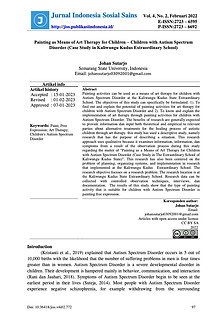Art Therapy Guides
Welcome to Art Therapy Guides! Each guide features step-by-step instructions for art activities, each grounded in research and shown to empower children with Autism Spectrum Disorder (ASD). Designed to be accessible and not overly complex, these activities make for creative and engaging art projects!

01
Origami
Using origami for therapy provides multifaceted advantages for children with autism, encompassing cognitive, motor, emotional, and social development. This activity not only soothes and calms but also sharpens fine motor abilities and fosters creativity. Additionally, it offers cognitive and educational benefits. Studies indicate that origami notably improves concentration and self-control among autistic children. Applied in both therapeutic and educational settings, it supports the enhancement of communication abilities, fine motor coordination, understanding of academic concepts, and social engagement, establishing its effectiveness as a therapeutic approach for autism.
02
Paint
Engaging in painting allows for individuals to explore colors and textures, which can be soothing and help in managing sensory sensitivities. Furthermore, it creates a non-verbal channel for self-expression, fostering both personal growth and therapeutic progress.


03
Sand Art
Children can express their feelings and ideas nonverbally through the manipulation of colored sand, which is especially useful for individuals who might find it difficult to communicate verbally. Sand art's adaptability and unrestricted style permit unrestricted expression and discovery, fostering curiosity and inventiveness. Furthermore, pouring, sifting, and molding the sand physically enhances hand-eye coordination and fine motor abilities.



